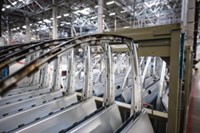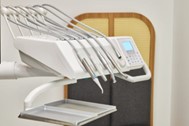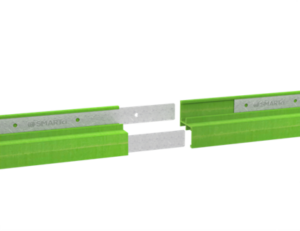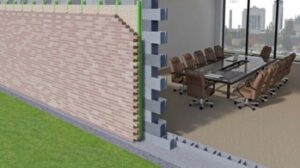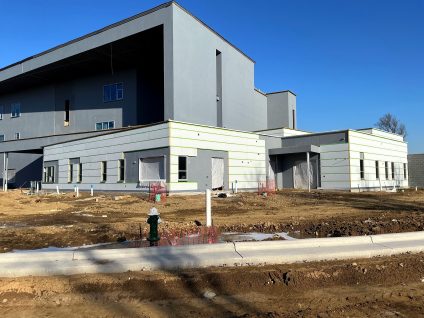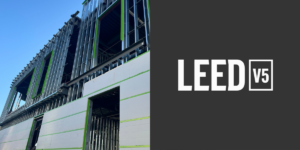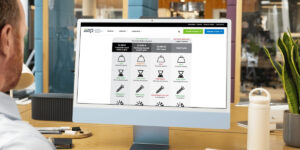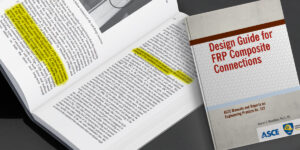Introduction
The advent of modern technology has greatly improved the way humans live their lives. We are now able to do more thanks to advances in science and technology which have allowed us access to more efficient tools. One such advancement is hybrid composite metal, which is an innovative material that is bringing about drastic changes across multiple industries. This revolutionary type of hybrid material offers a unique combination of properties unmatched by any other material.
With its incredible strength-to-weight ratio, durability, thermal efficiency, corrosion resistance, cost-effectiveness, environmental friendliness, and ease of use, Hybrid composite metal offers limitless possibilities for various applications from the automotive manufacturing process to aerospace engineering. In this article, we will explore how hybrid materials and components have changed the face of multiple industries and why it is so important for the future development of many products.
What is hybrid composite metal?
Hybrid composite metal is a combination of composite and metal materials joined together to create a hybrid component. It combines the best properties of metal and composite material, such as the thermal efficiency of fiber or plastic, with the strength and fastener retention of metal to create an incredibly strong, durable, and lightweight material.
Manufacturers use hybrid composite metal for various applications, including automotive parts, aerospace components, medical implants, marine equipment, and building materials. In addition to its strength-to-weight ratio, its corrosion resistance is also extremely high which makes it ideal for use in corrosive environments such as seawater, building facades, and chemical plants. Furthermore, hybrid composite metal offers cost savings over traditional metals and FRP due to reduced parts, pieces, and labor time required for fabrication and installation.
How long have hybrid composite metal materials been around?
Manufacturers have used hybrid composite metal materials for over 20 years. Initially developed in the late 1990s, it has since become a widely utilized material across multiple industries due to its unique combination of material properties. With ongoing research and development on this innovative hybrid material, new possibilities are sure to emerge across multiple industries.
Benefits of hybrid composite metal
One of the primary benefits of hybrid composite metal materials is their high stiffness and strength-to-weight ratio. This makes it an ideal choice for applications where weight optimization is essential, such as aerospace engineering, building construction, and the automotive manufacturing process. It is significantly lighter than traditional metals yet has a high strength-to-weight ratio, which allows for greater design flexibility. Furthermore, due to its superior durability and corrosion resistance, it can be used in harsh environments, including extreme temperatures.
Cost Savings and Design Flexibility
In addition to its strength and corrosion resistance, hybrid composite metal also offers cost savings over traditional metal alloys due to reduced weight and labor time required for fabrication or installation. The material’s flexibility also allows manufacturers to customize design parameters compared to components made from traditional materials. Furthermore, due to its ability to withstand elevated temperatures and pressures, hybrid materials can be used in a variety of applications such as medical implants, automotive parts, aerospace components, and building components. Finally, hybrid composite metal is environmentally friendly and can extend the life of its components due to its durability and strength, reducing overall waste sent to landfills.
Thermal Efficiency and Energy Savings
Hybrid composite metal materials offer superior thermal efficiency through their combination of metal and composite components. The material’s thermal properties provide better protection from extreme temperatures, enabling it to maintain its form and function in extreme temperature environments where traditional metals can become weak or brittle. Additionally, its lightweight nature provides enhanced performance for applications requiring reduced weight, such as aerospace engineering designs.
This increased thermal efficiency helps to reduce energy consumption during use, making hybrid composite metal a cost-effective choice for energy-efficient projects. Furthermore, the material’s ability to resist heat transfer makes it ideal for use in insulation applications where a consistent temperature is required. For these reasons, hybrid composite metal materials are becoming increasingly popular across multiple industries due to their superior thermal efficiency benefits.
A Versatile Material with Limitless Potential
All these features combine to make hybrid materials an incredibly versatile material with limitless potential across multiple industries. Its unique combination of properties has led to its widespread use in numerous products and applications. As research and development continue on this innovative hybrid material, new possibilities are sure to emerge from its use across multiple industries.
How does hybrid composite metal compare to materials such as metal or fiber-reinforced polymer (FRP)?
While hybrid composite metal is an excellent choice for various applications, other materials are available, including metal or fiber-reinforced polymer (FRP). Ultimately, the right material selection should be based on a careful evaluation of the product design needs and its intended application.
However, when looking at overall performance in terms of weight optimization, corrosion resistance, strength, and durability, hybrid composite metal can prove to be an excellent choice and superior alternative over both metals as well as FRP due to its unique combination of properties.
In conclusion, hybrid composite metal is a versatile hybrid material with numerous advantages that make it suitable for various high-performance applications across multiple industries. Its superior strength-to-weight ratio, durability, thermal efficiency, corrosion resistance, and sustainability provides benefits over traditional metals and FRP make it an ideal material for use in products that require these features.
How hybrid composite metal is changing multiple industries
Hybrid composite metal is having a revolutionary effect on multiple industries, as its range of properties make it an ideal material for many applications. Let’s look at a few industries utilizing hybrid composite metal materials today.
The Automotive Industry:

The use of hybrid composite metal materials in the automotive industry has been transformative. It has allowed for lighter, stronger, and more cost-effective components to be produced, which have had a significant impact on fuel efficiency and performance. Vehicle manufacturing technology now allows the ability to reduce the weight of vehicles without compromising on strength, thanks to the strength-to-weight ratio provided by hybrid composite metal. This has enabled them to make cars that are more aerodynamic and efficient while also improving safety.
In addition, its corrosion-resistant properties make hybrid composite metal exceptionally well-suited for exhaust systems, fuel tanks, and underbody components that are constantly exposed to harsh weather conditions. It removes the requirement for additional coating or painting processes, leading to a significant decrease in manufacturing costs. These cost savings can be passed on to consumers, making cars more affordable.
The use of hybrid composite metal materials has also been beneficial for racing vehicles, where weight reduction is essential for improved performance. The lightness and strength provided by hybrid composite metal enable engineers and manufacturers to create parts that reduce vehicle drag and improve acceleration times without compromising on safety and durability. As a result, it has become an invaluable material in the automotive industry over the last few years.
Finally, due to its thermal conductivity properties, hybrid composite metal is being used in components such as brake discs and engine blocks to help dissipate heat from critical areas faster than traditional metals. This helps keep engines running cooler and smoother whilst providing superior levels of strength and durability.
Overall, hybrid materials have brought incredible benefits to the automotive industry and have radically improved car manufacturing. Their unique properties make them well-suited for a wide range of applications, making them invaluable for vehicle manufacturers around the world.
Aerospace Industry:

The use of hybrid composite metal materials in the aerospace industry has become increasingly popular due to their superior strength-to-weight ratio, durability, and corrosion resistance. In addition, hybrid composite metal is lighter than traditional metals, making it an ideal choice for aircraft and spacecraft that need weight reduction for improved fuel efficiency.
For example, manufacturers make satellite components such as antennae, solar panels, and reflectors from hybrid composite metal because they need to be lightweight yet durable enough to withstand extreme temperatures and radiation exposure. Furthermore, aircraft use hybrid composite metal for various structural components, including frames, spoilers, rudders, and leading edges, which require high strength while remaining lightweight to maintain performance levels.
In addition, hybrid composite metal is an ideal material for a variety of other aerospace applications, such as rocket engines and fuel tanks. Its high corrosion resistance makes it suitable for use in harsh environments where traditional metals would corrode quickly. This allows the components to remain durable during launch and re-entry which are two of the most critical stages in any mission.
Finally, hybrid material has also been used on spacecrafts due to its ability to reduce vibration while maintaining its structural integrity. This helps protect sensitive equipment from damage that excessive vibrations or shock forces can cause. Additionally, hybrid composite metal materials offer cost savings over traditional metals due to their reduced machining costs and labor time required for fabrication. It is clear that hybrid composite metal materials offer many advantages over traditional materials and are an ideal choice for a wide range of aerospace applications.
Medical Industry:

Hybrid composite metal materials are also being used in the medical industry for a variety of applications due to their superior strength-to-weight ratio and biocompatibility. One of the most common uses is in implants such as hip replacements, joint replacements, and dental bridges, where hybrid composite metal’s excellent durability can help reduce the risk of failure or rejection by the body. In addition, its non-magnetic properties make it an ideal choice for MRI scans, which can be used to monitor changes in bone structure during healing processes.
Manufacturers also use hybrid composite metal in other medical devices such as orthopedic braces and prostheses because its lightweight nature allows patients to stay comfortable even with constant use over long periods. Its corrosion resistance makes it ideal for implants that need to remain durable in the body over extended periods. Additionally, manufacturers have used hybrid composite metal in surgical instruments such as scalpels and forceps for its superior strength and durability, reducing wear and tear during long procedures.
Finally, medical manufacturers use hybrid composite metal in bio-absorbable devices such as stents, pins, and screws, designed to slowly degrade after serving their purpose. These materials keep the devices strong while allowing them to dissolve over time once no longer needed. This can help speed up recovery times by removing the need for further surgery or treatments to remove the device manually.
Overall, hybrid composite metal materials offer many advantages for the medical industry due to their superior strength-to-weight ratio, non-magnetic properties, corrosion resistance, and biocompatibility. These materials are being used in a variety of applications, from implants to surgical instruments and bio-absorbable devices, which help improve patient outcomes.
Marine Industry:

The use of hybrid composite metal materials in the marine industry is rapidly growing due to their superior strength-to-weight ratio and excellent corrosion resistance. Manufacturers use hybrid composite metal on various vessels such as yachts, commercial fishing boats, military ships, cruise ships, and even submarines.
One of the most common applications is in hulls, where hybrid composite metal offers a lightweight yet durable option that still maintains excellent structural integrity. This reduces the overall weight while not sacrificing strength, which helps improve fuel efficiency by reducing drag forces. In addition, its corrosion resistance makes it ideal for use in saltwater environments where traditional metals may corrode quickly.
Manufacturers also use hybrid materials on outboard motors to keep them lightweight yet strong enough to handle the rigors of marine use. This helps reduce vibration and shock forces, which can cause damage over time. Additionally, its non-magnetic properties make it a great choice for components that need to operate near magnetometers, such as navigation systems.
Finally, manufacturers use hybrid materials on docks and piers for their superior strength and corrosion resistance. This allows them to remain durable even in saltwater environments while still providing excellent structural integrity so they can last for many years with minimal maintenance.
Overall, hybrid composite metal materials offer numerous advantages for marine applications, including lightweight durability, corrosion resistance, and non-magnetic properties. These materials are ideal for a wide range of vessels, from small yachts to large cruise ships, and are quickly becoming a popular choice for many marine applications.
Construction Industry:

The use of hybrid composite metal materials in the construction industry has been gaining popularity due to their unique combination of structural strength, durability, and thermal properties. Manufacturers use it in various applications, such as windows, doors, and sub-framing, where its thermal properties help improve energy efficiency. Additionally, its corrosion resistance makes it well-suited for areas with high humidity or saltwater exposure since it does not require additional coatings for protection.
Hybrid materials now serve as an alternative to traditional steel sub-framing in buildings because of their superior strength-to-weight ratio. This allows for stronger structures that can support heavier loads while remaining light enough to reduce the overall cost of construction or sacrifice energy efficiency.
“Furthermore, hybrid composite metal also serves to create a variety of façade components for buildings because of its superior durability, weather resistance, and thermal efficiency. The material resists UV radiation and extreme heat or cold, allowing use in all types of climates without requiring additional protection. It is also fire-resistant, which makes it ideal for use in high-rise buildings where safety is paramount.
Overall, hybrid composite metal materials offer many advantages over traditional building materials due to their superior strength-to-weight ratio, corrosion resistance, and weather resistance. These characteristics make them an ideal choice for use in a variety of construction applications, including windows and doors, electronic installations, sub-framing, and façade components. Its use can result in improved energy efficiency, stronger structures, and more resilient surfaces that can stand up to the elements for many years to come.
Summary
Hybrid materials are becoming increasingly popular in various industries. Hybrid materials offer a lightweight yet strong alternative to traditional metals or FRP materials. In addition, they also provide corrosion resistance which makes them suitable even for saltwater environments, as well as non-magnetic properties for electronic installations. In the construction industry, builders use hybrid composite metal as an alternative to steel sub-framing. This material is lighter than steel but remains equally strong or even stronger, and its weather resistance makes it suitable for façade applications in all climates. By using hybrid materials, builders can achieve several advantages, including improved energy efficiency, stronger structures, and more resilient surfaces that last for many years.
In the construction industry, builders are using hybrid composite metal as an alternative to steel sub-framing because it is lighter yet just as strong, if not stronger, than steel. Its weather resistance also makes it suitable for façade applications in all climates. Overall, using hybrid materials offers many advantages, such as improved energy efficiency, stronger structures, and more resilient surfaces that can last for many years.
GreenGirt CMH™ Continuous Insulation and the SMARTci® Building Enclosure System
GreenGirt CMH Sub-Framing – Interlocking Joinery
SMARTci Building Enclosure System System including GreenGirt CMH and Mineral Wool Insulation
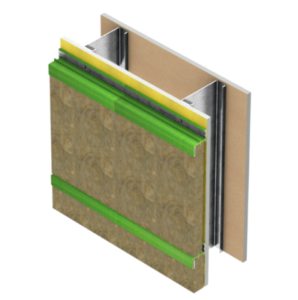
GreenGirt® CMH continuous insulation and SMARTci®building enclosure systems provide an innovative solution for construction projects, utilizing the best of both worlds when it comes to metal and composites. GreenGirt CMH and SMARTci systems utilize a unique sub-framing component that combines thermoplastic composite with metal, creating a lightweight yet strong alternative to traditional metal Z-girts.
Energy Efficiency and Weather Resistance
The SMARTci building enclosure system encompasses the innovative technology of GreenGirt CMH sub-framing but expands it to include the use of high-performing insulation material, making it the only CMH building enclosure solution on the market. The combination of composite materials and metal allows for superior energy efficiency and weather resistance, making GreenGirt CMH and SMARTci systems ideal for façade applications in all climates. It also provides improved performance by eliminating the thermal bridging of a building envelope, increasing comfort levels, reducing thermal bridging of the envelope, and creating a healthier building overall by assisting in preventing moisture-related issues.
Superior Structural Integrity and Durability
Both GreenGirt CMH and SMARTci systems are innovative solutions that utilize the best of both worlds when it comes to metal and thermoplastic composite. The lightweight yet strong material provides superior structural integrity, corrosion resistance, and weather resistance, making it suitable for even the most demanding construction projects and building conditions. Furthermore, its enhanced energy efficiency capabilities reduce operational costs while improving user experience, ensuring that any project utilizing this system will stand out from the rest.
Ideal Choice for Demanding Construction Projects
Overall, GreenGirt CMH continuous insulation systems and SMARTci building enclosure systems are ideal choices for any construction project that requires superior structural integrity, corrosion resistance, and energy efficiency. The combination of the metal with composite materials provides a unique solution that is highly effective in even the most demanding applications. With its lightweight yet strong characteristics, it is no wonder why these systems have become the top choices for construction projects.
If you are interested in learning more about GreenGirt CMH or SMARTci systems, visit our website or contact us today!
© 2023 Advanced Architectural Products





